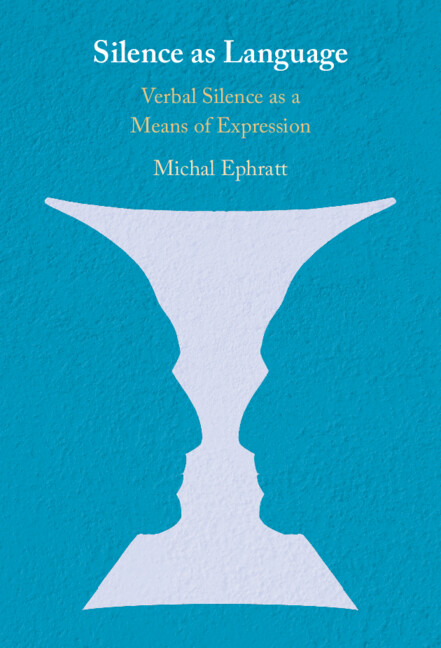
Ha ha ha, no, in between the many examples of silence in writing (classic and other), in dialogues, in public exchanges as well as in intersubjective conversations, comes speech: words and paragraphs explaining the categorisation of the different silences, pointing to their identification and looking at their functions. In fact, silence, verbal or other, is never encountered in isolation, it always appears and detected in its specific context. In regards to verbal silence, that is when silence is the figure of the verbal exchange speech serves as its background.
Owing to their knowledge of the world and their intersubjective and verbal competence, people as humans and as speakers (addressers and addressees) differentiate between the different silences, decipher them and act in accordance. Linguistics does not teach a language or a phenomenon thereof (such as the nominal phrases, discourse markers, or verbal silences). Linguistics as a descriptive scientific discipline describes, explains and sometimes makes predictions regarding the speakers’ verbal behavior. Focusing on the study of (verbal) silence, the book describes, illustrates, explains and classifies the forms and functions of verbal silence, as if surfacing the interlocutors’ verbal competence concerning (verbal) silence.
Does silence really speak?
While the primarily function of speech is to communicate, the English word ‘silence’ may refer to different concepts such as the antonym of noise (‘stillness’) or the antonym of speech. Confining ‘speech’ and ‘speaking’ to the use of a verbal code, and not metaphorically, as for example, ‘these numbers speak volumes about the pandemic’ silences speak in two different modes. One mode is Goffman’s given-off information: the information which the interlocutor subjectively implicates from a situation involving silence (such as symptomatic silences, pauses, etc.). The other mode is when silence is chosen by the speaker as a verbal means of expression. Then such silences, like speech (articulation), are part of the verbal inventory and so part of the given information. The lay speaker is probably ignorant of linguistic terms such as ‘adverb’ and ‘theta roles’ but s/he easily and naturally may identify the verbal silence in Apple’s slogan ‘Think different’. This slogan like the majority of the uses of verbal silence do their job: they speak. Whether the addresser is familiar with the intertextuality (again spaces-silence) alluding ibm’s slogan ‘Think’ or not s/he has no difficulty filling in the left out complement in Apple’s slogan not only making it communicative and meaningful but also stepping into the addresser’s role and so making that message hesown message.
Why would one use silence and not speech?
The study of verbal silence does not seek to deprive speech of its precedence, but to enhance our understanding of its loyal and junior helpmate: verbal silence. Going back to the Apple slogan our task as scholars or as speakers does not end once we spot the verbal silence. The task likewise is not completed once we identify the unarticulated signifier (the left out morphemes, words, utterances, etc.). Examined from the communicative and cooperative principle’s aspects it is completed only when we decipher the meaning of the specific message accounting also for the additional significance contributed by the choice of verbal silence rather than speech. Three such gains were voiced above concerning Apple’s slogan. Other considerations promoting the choice of verbal silence are, for example, iconicity, that is denoting absence, void in the real world (signified) using a matching signifier (no articulation). Another important motivation is the shortage of words: ‘no words can express …’ or the fear that the use of daily words will result in the failure to express the uniqueness of an experience.
What could linguists and linguistics benefit from the study of silence?
First of all, focusing on the forms and functions of verbal silence and combining these findings and insights with the extensive and familiar knowledge of the forms and functions of speech (articulated code) will supply a full description and understanding of the human code. Another contribution gained from incorporating the study of verbal silence in linguistic exploration is that the study of absence as something (rather than nothing) sheds new light on linguistic issues and phenomena, thereby contributing to the discovery, refinement, clarification and conceptualisation of broadly as well as negligibly studied linguistic issues.
Is this book limited to linguistics?
The book, examples and particularly contexts and explanations refer to all areas of life, daily life and specific settings, from personal to public from intimate to legal and official from universal to culture specific and from spoken and signed languages to literary and poetic corpora.

Latest Comments
Have your say!